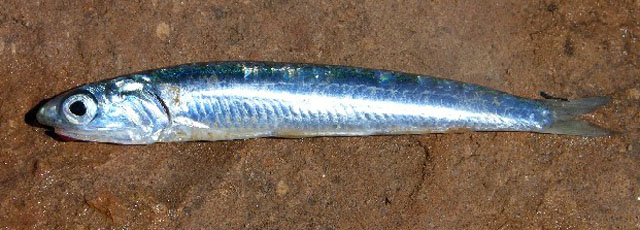| Engraulidae (Anchovies), subfamily: Engraulinae |
| 15 cm SL (male/unsexed); max. reported age: 6 years |
|
pelagic-neritic; brackish; marine; depth range 31 - 70 m |
| Southwest Pacific: Australia (from Queensland at about Cape Capricorn south to southern Tasmania; entire southern coast of Australia, except for Great Australian Bight, and north to Shark Bay, Western Australia), including Lord Howe Island and Norfolk Island; and New Zealand (most of the North Island and all but the southeast coast of the South Island). |
|
Dorsal spines (total): 0-0; Dorsal soft rays (total): 13-18; Anal spines: 0-0; Anal soft rays: 17-19; Vertebrae: 40-48. Hardly differs from the European anchovy (E. encrasicolus) and can be identified from that description. For most of its range it is the only anchovy present, but in the extreme north it may overlap with species of Encrasicholina or Stolephorus, which have small needle-like scutes before the pelvic fins; species of Thryssa have compressed bodies and a keel of scutes along the belly. |
| Found mostly inshore: chiefly in bays, inlets and estuaries, sometimes in low salinities. Older individuals tend to move out to sea in winter and back in the spring. Forms compact schools much preyed upon by larger fishes, common dolphins and birds. Feeds on plankton. Spawns in inlets, bays and also estuaries, probably throughout the year but mainly in late spring to early autumn and especially about November to February. The eggs are ellipsoidal. Utilized as fish paste. |
|
Least Concern (LC); Date assessed: 18 July 2018 Ref. (130435)
|
| harmless |
Source and more info: www.fishbase.org. For personal, classroom, and other internal use only. Not for publication.

